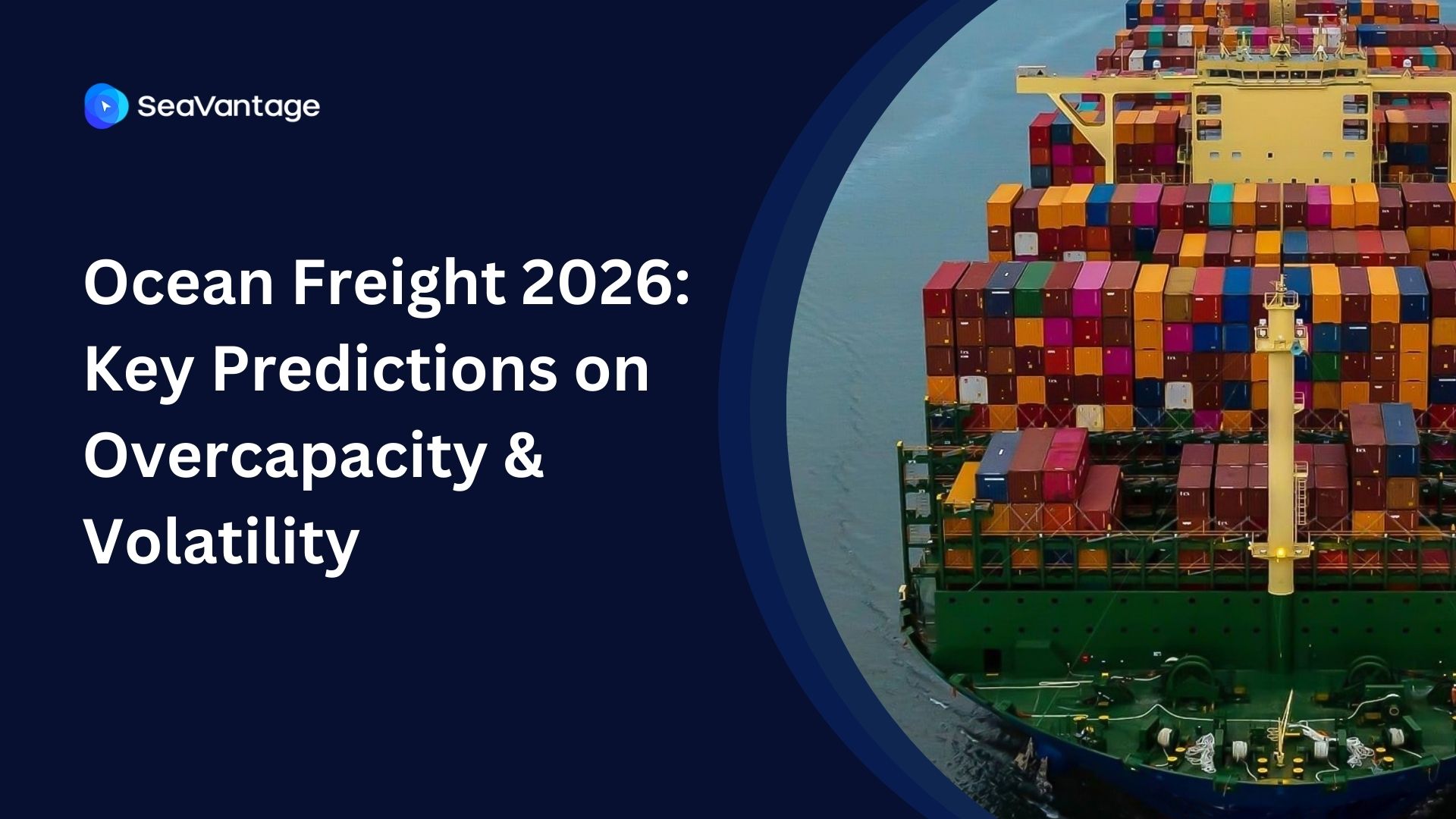Understanding Master Bill of Lading and Tracking Shipments by Bill of Lading
What is a Bill of Lading (BL)?
A bill of lading is a legal document used in the transportation and shipping industries which lists the goods being shipped and the terms under which they will be delivered.
What is a Master Bill of Lading (MBL)?
A Master Bill of Lading is a type of Bill of Lading that serves as a legally enforceable document issued by a carrier prior to starting a shipment. It functions as the official contract for transporting goods in international trade. Typically, this document is generated by the carrier once it accepts the goods for delivery from an exporter. The carrier then issues the Master Bill of Lading to the entity that arranged for the shipment, which is usually the freight forwarder working in collaboration with the exporter on their shipments.
Understanding the Master Bill of Lading
The Master Bill of Lading (MBL) serves as a formal contract between the shipper, who is sending the goods, and the main carrier, which is the company transporting the goods. This document outlines the terms and conditions under which the cargo is moved, ensuring both parties understand their rights and responsibilities.
There is a key difference between the Master Bill of Lading (MBL) and the House Bill of Lading (HBL). The MBL is issued by the main carrier directly involved in the transportation of the goods. In contrast, the HBL is issued by a freight forward, a third-party service that organizes shipments. While both documents serve similar functions, the MBL pertains to the primary transport service, and the HBL relates to the logistics services arranged by the freight forwarder.
An MBL contains essential information about the shipment. This includes details about the shipper (the party sending the goods) and the consignee (the party receiving the goods), the vessel and voyage numbers which identify the specific ship and trip, and a comprehensive description of the cargo, including its type, quantity, and any specific handling requirements.
Legally, the Master Bill of Lading holds significant importance regarding the liability for the cargo and the assertion of ownership. It is a key document in the event of any disputes over damages or losses during transit, as it proves who had legal responsibility over the goods. Furthermore, the MBL is instrumental in the transfer of ownership, as endorsing the document can be required for the consignee to take possession of the shipment.
The Importance of Tracking Shipments by Bill of Lading
Bills of Lading (BLs) play a crucial role in the logistics sector by enabling the tracking of shipments from their point of origin to their destination. This feature allows all parties involved to monitor the progress of the shipment in real-time, ensuring transparency and security throughout the transport process.
BL tracking is pivotal in managing the expectations and timelines within the supply chain. By providing detailed insights into the shipment's location and estimated arrival time, businesses can plan their operations more effectively, reduce inventory costs, and improve customer satisfaction by providing accurate delivery updates.
Additionally, BL tracking is an essential tool for identifying and resolving any delays or issues that occur during transit. By having access to real-time data, logistics managers can quickly address problems such as route disruptions, customs delays, or transportation failures. This capability not only minimizes the impact of such issues on the delivery schedule but also enhances the overall resilience of the supply chain.
Methods of Tracking Shipments
The tracking of shipments via Bills of Lading (BLs) can be conducted through both traditional and digital avenues. Traditional methods might involve direct communication with the carrier for updates, while digital methods have expanded to include carrier websites, third-party tracking services, and comprehensive supply chain management software. These digital platforms allow for the input of BL numbers to access detailed tracking information regarding the shipment's progress.
Real-time tracking and the application of data analytics present significant advantages for optimizing logistics operations and reducing associated costs. Real-time tracking enables stakeholders to monitor the exact location and status of their shipments at any given moment, enhancing decision-making processes regarding inventory management, warehousing, and delivery scheduling. Meanwhile, data analytics can reveal patterns and insights from shipment histories, such as identifying frequent delays at certain transit points or times of the year, which allows for proactive adjustments to routes or schedules. Together, these tools not only improve the efficiency and reliability of the supply chain but also contribute to a more predictable and cost-effective logistics operation.
Challenges and Considerations in BL Tracking
- Discrepancies between MBLs and HBLs: A common challenge in the tracking of shipments by Bill of Lading (BL) is managing discrepancies between the Master Bill of Lading (MBL) and House Bill of Lading (HBL). These discrepancies can arise due to differences in the information provided by the main carrier and the freight forwarder, respectively. To address these challenges, it is crucial to have a system in place for verifying and reconciling the details in both documents. Regular communication and coordination between the shipper, carrier, and freight forwarder are essential to ensure that all parties have consistent and accurate information.
- Accuracy and Completeness in BL Documentation: The efficiency of tracking shipments and the smoothness of customs clearance processes heavily depend on the accuracy and completeness of BL documentation. Incorrect or incomplete information can lead to delays, increased costs, and complications in the logistics chain. It is vital for shippers to meticulously review and provide all required details when preparing BLs, including accurate descriptions of the goods, correct shipper and consignee information, and precise terms of shipment. Implementing double-checking procedures and utilizing software that can flag potential errors can greatly improve document accuracy.
- Privacy and Data Security Considerations: With the increasing reliance on digital methods for BL tracking, considerations for privacy and data security have become paramount. The tracking information contains sensitive data about business operations, shipment contents, and trade routes that could be exploited if accessed by unauthorized parties. Companies must ensure that their digital tracking systems are equipped with strong encryption, access controls, and regular security audits to protect this information. Additionally, adhering to international data protection regulations and standards is essential in maintaining the trust of all stakeholders involved in the shipment process.
SeaVantage's Approach to Tracking Master Bill of Lading Shipments
SeaVantage tracks shipments via bill of lading by leveraging integration with shipping carriers and other data sources. Here is a general overview of our process
- Data Integration: Like other logistics platforms, SeaVantage integrates with shipping carriers together with live vessel AIS position data to access shipment data. This integration enables us to receive real-time updates on shipments, including information from the bill of lading.
- Real-Time Tracking: Once the bill of lading information is extracted, SeaVantage provides real-time tracking capabilities. This allows users to monitor the movement of their shipments, receive updates on transit times, and track any relevant milestones during the shipping process for every container under the master bill of lading.
- Predictive Analytics for ETA: SeaVantage utilizes predictive analytic algorithms to forecast the Estimated Time of Arrival (ETA) for shipments. By analyzing historical data, current transit conditions, and other relevant factors, we can provide customers with estimated arrival times, helping them better plan and manage their logistics operations.
- API Integration: SeaVantage offers API integration capabilities, allowing businesses to connect their existing systems with SeaVantage’s visibility platform seamlessly. This integration enables automatic data exchange, facilitating tasks such as submitting shipment information, retrieving tracking updates, and managing logistics operations directly from the user’s software environment.
- Notifications and Alerts: Users may receive notifications and alerts regarding their shipments. These alerts could inform them about significant events such as delays, schedule changes, or when the shipment reaches specific checkpoints along its journey.
- Dashboard and Reporting: SeaVantage offers a user-friendly dashboard where customers can view the status of their shipments and access relevant information. Additionally, we provide reporting features that offer insights into shipment performance, transit times, and other key metrics.
- Customer Support: SeaVantage provides customer support to assist users with tracking their shipments and resolving any issues that may arise during transit. This support could include tracking assistance, updates on data discrepancies, and general inquiries related to the shipment process.
Conclusion
The Master Bill of Lading (MBL) occupies a central position in the domain of international trade and logistics. As a key document, it not only serves as a contract of carriage, evidencing the agreement between shippers and carriers, but also acts as a receipt of goods and a document of title, facilitating the transfer of ownership. Its comprehensive nature ensures that all involved parties have a clear understanding of the terms of shipment and the specifics of the cargo being transported, underscoring its indispensable role in global commerce.
Effective shipment tracking brings substantial benefits to global supply chains. It enhances transparency, allowing businesses to monitor their goods in real-time, which is crucial for planning and operational efficiency. Improved tracking capabilities lead to better inventory management, reduced lead times, and increased customer satisfaction through timely deliveries and accurate information sharing. Moreover, the ability to swiftly identify and address issues in transit minimizes disruptions, contributing to a more resilient and reliable supply chain.
Looking ahead, the future of BL management and tracking is set to be shaped by advancements in technology, particularly through the adoption of blockchain and Internet of Things (IoT) technologies. Blockchain offers a secure, transparent, and immutable ledger, perfect for recording the complex transactions and ownership changes inherent in international shipping, thereby enhancing trust and reducing the potential for disputes. IoT technology, through smart sensors and devices, promises to deliver even more precise tracking and monitoring of cargo conditions in real time, potentially revolutionizing logistics operations. Together, these technologies are poised to significantly improve the efficiency, security, and reliability of managing and tracking shipments by Bill of Lading, marking a new era in the digitization of supply chains.
2025년 9월, 주요 글로벌 항만에서 어떤 운송사가 가장 긴 선박 체류 시간을 기록했는지 확인해보세요. 트렌드를 비교하고, 지연을 파악하며, 전체 항만 데이터를 통해 운송 전략을 최적화할 수 있습니다.
2025년 8월, 주요 글로벌 항만에서 어떤 운송사가 가장 긴 선박 체류 시간을 기록했는지 확인해보세요. 트렌드를 비교하고, 지연을 파악하며, 전체 항만 데이터를 통해 운송 전략을 최적화할 수 있습니다.
2025년 7월, 주요 글로벌 항만에서 어떤 운송사가 가장 긴 선박 체류 시간을 기록했는지 확인해보세요. 트렌드를 비교하고, 지연을 파악하며, 전체 항만 데이터를 통해 운송 전략을 최적화할 수 있습니다.
Discover how RTTVP is a game-changer for Logistics Service Providers. Learn the 5 core benefits, from B2B customer experience to predictive operational planning.
Discover the top ocean freight predictions for 2026, from ship overcapacity to Suez Canal disruption, global sourcing shifts, and strategies for volatility.
Discover why container tracking breaks under complexity. Learn how B/L-based visibility improves ETA accuracy, boosts productivity, cuts TCO, and reduces data loss.



.svg)






.png)